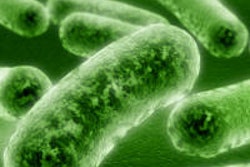
Scientists are discovering that a small protein named developmental endothelial locus 1 (Del-1) can arrest the processes that lead to runaway oral inflammation and periodontitis, particularly in older individuals.
In a study published March 25 in Nature Immunology, George Hajishengallis, DDS, PhD, and his team -- in collaboration with a group led by Triantafyllos Chavakis, MD, PhD -- showed that administration of Del-1 in the oral cavity reduces the production of interleukin 17 (IL-17) and also inhibits periodontal bone loss. IL-17 is an important element of the inflammatory cascade.
"We think Del-1 is a very promising molecule for a new therapy in periodontitis and other inflammatory diseases," said Dr. Hajishengallis, who is professor of microbiology at the University of Pennsylvania's School of Dental Medicine. "It worked very potently in our experiments so in principle it could also work well in humans, although this will take time to determine."
Meeting of the minds
The work began in earnest in 2008 when Dr. Hajishengallis met Dr. Chavakis, from Dresden University of Technology in Germany, for the first time at an innate-immunity meeting in Greece. Both were delving into the functions of Del-1, which is produced by endothelial cells.
Dr. Hajishengallis' team had established that lower levels of Del-1 are associated with increased periodontal bone loss in old age. Dr. Chavakis presented data at the meeting showing Del-1 inhibits the action of lymphocyte function-associated antigen 1 (LFA-1). This inhibition in turn reduces the ability of neutrophils to adhere to blood-vessel walls, a necessary step in tissue infiltration (Science, November 2008; Vol. 322:5904, pp. 1101-1104).
"I was very enthusiastic when I heard Dr. Chavakis' talk because I immediately realized the implications of his research," recalled Dr. Hajishengallis. "So I asked him if he was interested in a collaboration."
— George Hajishengallis, DDS, PhD
The teams worked in tandem to demonstrate that periodontitis becomes more prevalent with age because Del-1 production decreases over time, resulting in less inhibition of LFA-1 and, hence, larger numbers of neutrophils in the periodontium.
"Both mice genetically engineered to not produce Del-1 in old but otherwise normal mice -- which also have practically no Del-1-- have periodontal tissue that is full of neutrophils," said Dr. Hajishengallis. "Strikingly, mice that were engineered to produce neither Del-1 nor LFA-1 did not have high levels of neutrophils in the periodontium because there was no LFA-1 and, hence, no LFA-1-mediated migration of neutrophils into the tissue."
Molecular detective work
These are among the findings published in the new paper. The team also found that both Del-1-deficient young mice and otherwise normal old mice have very high levels of IL-17 in the periodontium due to the accumulation of neutrophils, which produce IL-17. Furthermore, they found that IL-17 inhibits production of Del-1, which consequently cannot inhibit the action of LFA-1. This leads to uncontrolled tissue infiltration by neutrophils.
Through more molecular detective work, they made another key discovery. Mice lacking Del-1, which normally would give the neutrophils a "get out of jail free" card and allow them to infiltrate tissue without interference, and that lack the receptor for IL-17 -- which renders the mouse cells "deaf" to the potential effects of the IL-17 -- do not develop periodontitis.
"Together, this evidence unequivocally said to us that IL-17 is destructive, at least in the mouse model we developed," said Dr. Hajishengallis. "This is the first paper to make a causal link between IL-17 and destruction of tissue in periodontitis and to show how the link can be broken."
The pièce de résistance came when the researchers injected Del-1 into the periodontium of old mice, which naturally develop periodontitis. As a result, the mice periodontium had lower levels of IL-17, as well as fewer neutrophils -- fewer of other cell types associated with inflammation and less bone loss.
Similarly, when they induced periodontitis in young mice and treated them with Del-1 either locally or systemically, "these mice were also protected," stated Dr. Hajishengallis. "In other words, Del-1 acts as the local keeper of the homeostatic balance in the periodontium by preventing excessive neutrophil infiltration and IL-17 production."
The teams hope to conduct more animal experimentation and then begin clinical testing. Among the goals is to attempt to determine how to increase endogenous Del-1 production in the elderly.



















